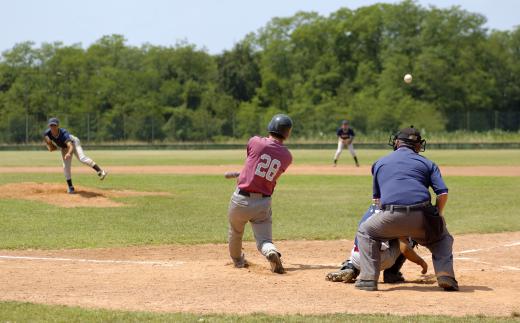The infield fly rule is one of the most misunderstood rules in the game of baseball. Little league coaches struggle to understand it, and the rule has even mystified professional managers at times. To begin, the rule can only come into effect when the following conditions are met:
- there are fewer than two outs in the inning;
- there are baserunners on first and second base or first, second, and third base; and
- the batter hit a fly ball in the infield area.
If these three elements are present, the umpire should call "infield fly rule — The batter is out." At that point, even if an infielder dropped the ball, the batter is still out.

The infield fly rule originated to protect baserunners from crafty infielders. Before the rule came into being, for example, if baserunners were on first and second and a fly ball was hit in the infield to the third basemen, the third baseman might let the ball fall in front of him on purpose. He could then pick up the ball, tag third base to force out the runner on second base, and then throw to second base to force out the runner on first. The third baseman was, therefore, able to secure two outs for his team rather than just one if he caught the ball.

This rule is a judgment call for the umpire. If he deems a fly ball catchable in the infield with the appropriate baserunners on base and fewer than two outs, then the batter is out — even if an infielder drops the ball. If the umpire calls an infield fly, however, and the ball drifts into foul territory and the third baseman, for example, drops the ball, the batter is no longer out. It is simply a foul ball at that point, and the batter can again step up to home plate. In such a situation, the proper call by the umpire should be, "infield fly rule, if fair."

Baserunners are often confused when an infielder drops the ball after the umpire calls the rule into play. They are under no obligation to advance, and they cannot be forced out. If the infielder drops the ball, the baserunners can advance at their own risk, and should they choose to advance, they need not tag up because the ball was not caught. If the ball is caught in the infield area after the rule has been called into effect, the baserunners can attempt to advance should they so desire, but they must first tag up, as with any other regulation fly ball.
